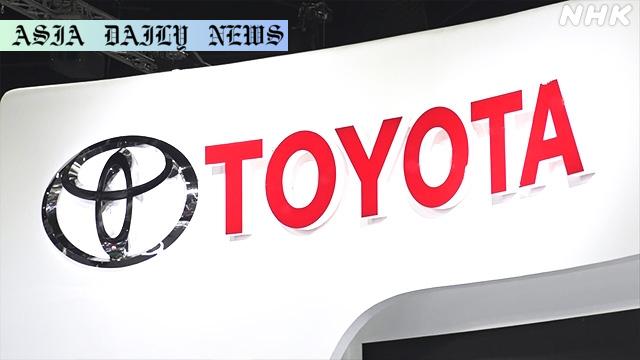Toyota: Japan’s automaker plans no price hikes in US despite new tariffs.
- Toyota will not increase car prices in the US despite 25% tariffs.
- The company aims to cut costs and consider US production expansion.
- Toyota prioritizes maintaining domestic production of 3 million units.

Toyota’s Stand Against Price Hikes Amid US Tariffs
In a bold move against rising global trade tensions, Toyota, the Japanese auto giant, has announced that it will not be increasing car prices in the United States despite the additional 25% tariffs imposed by the Trump administration on auto imports. This decision comes at a time when automakers worldwide are grappling with the significant impact of protectionist policies and attempting to strategize their way through volatile market conditions.
The tariffs, aimed at promoting domestic auto production within the United States, put substantial financial pressure on foreign automakers such as Toyota. Nevertheless, Toyota’s commitment to its pricing strategy echoes its focus on consumer trust and maintaining market competitiveness. For now, the automaker has opted to absorb the increased costs rather than pass them onto its American customers.
Maintain the Production Threshold: Toyota’s Strategic Priority
An essential aspect of Toyota’s decision is to uphold its domestic production threshold of over 3 million vehicles annually in Japan. Achieving this milestone ensures the company retains its technological capabilities and production efficiency. Maintaining output levels in Japan has been a strategic priority for the company to stay competitive amidst changing economic scenarios.
In 2022 alone, Toyota produced 3.12 million vehicles in Japan, with over 530,000 units exported to the US, solidifying its position as one of the leading contributors to the automotive supply chain. The exported units play a pivotal role in Toyota’s overall revenue, making the US one of its most crucial markets globally.
Cost-Cutting and Operational Adjustments
To cope with the rising production costs linked to the tariffs, Toyota plans to intensify its cost-cutting initiatives. However, an executive from the company acknowledged the challenges and limitations of reducing costs, pointing out that prolonged strategies could lead to diminishing returns.
As an additional measure, Toyota is contemplating expanding its production facilities within the US. While this approach would help alleviate the impact of tariffs and align with the administration’s push for local production, it involves substantial financial investments, operational transitions, and long-term planning. Such an expansion could re-align Toyota’s supply chain, potentially reducing its dependency on exports from Japan to the US.
The Balancing Act: Consumer Trust and Economic Shifts
Through its decision to forego immediate price hikes, Toyota has showcased a commitment to maintaining consumer trust. The delicate balancing act between absorbing tariff-induced costs and strategizing long-term adjustments highlights the automaker’s resilience and adaptability in an unpredictable economic climate.
Despite challenges, Toyota’s approach may serve as a benchmark for other automakers navigating similar pressures in global trade. By focusing on its operational and production strengths, Toyota continues to position itself as a global leader in the automotive industry, adapting proactively to protect both consumer relationships and its market competitiveness.



Commentary
Toyota’s Response: A Lesson in Strategy
Toyota’s reaction to the US administration’s 25% automotive tariffs brings a mix of ingenuity, resilience, and strategic forethought. Amid an era of rising protectionism and trade wars, Toyota’s approach not only mirrors its understanding of the global economic landscape but also offers a roadmap for automakers facing similar challenges worldwide. As industry observers, we can derive several critical learnings from Toyota’s actions.
Keeping Consumer Interests in Mind
One of the standout aspects of Toyota’s response is its decision to shield consumers from bearing the brunt of increased costs. By absorbing the financial hit associated with the tariffs, Toyota demonstrates its commitment to maintaining trust and loyalty among its customers. The company’s strategy sends a powerful message: consumer satisfaction comes first, even in turbulent economic conditions. This decision emerges as a timeless lesson in building unwavering brand equity.
Long-Term Thinking Over Short-Term Gains
While other businesses might have resorted to immediate price hikes for offsetting the additional costs, Toyota has instead chosen a long-term approach. By avoiding price escalations for now, Toyota retains its competitive edge in the US market. This move underlines the brand’s deep understanding of market dynamics and its ability to balance short-term fiscal prudence with long-term loyalty and growth.
Adapting Operations and Policies
Another noteworthy aspect of Toyota’s strategy revolves around its operational adjustments. By exploring production expansion within the US, the automaker showcases its willingness to align its global supply chain with evolving geopolitical and economic trends. Such bold decisions not only exhibit adaptability but also resilience, serving as an inspiration for other industry leaders grappling with similar challenges.
In conclusion, Toyota’s strategic response to the US tariffs underscores an excellent balance of tactical execution and empathetic corporate leadership. As the global economic landscape continues to shift, Toyota has set an example of how leading corporations can navigate such challenges while prioritizing their core values and stakeholder relationships.